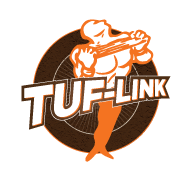Frequently Asked Questions
1. What is Tuf-Link?
Tuf-Link is a non-rewettable acrylic free latex based emulsion copolymer concrete bonding adhesive and admixture.
2. Who uses Tuf-Link?
Tuf-Link has a variety of uses. Currently the largest users are stucco contractors and swimming pool finishers. However, tile installers use it as an admixture in thin-set tile mortar. Others use it to provide a strong water resistant bond for cultured stone, for driveway resurfacing and repair, and all forms of concrete bonding where water exposure is an issue. Use your imagination and let us know what application you find.
3. How is Tuf-Link used?
Tuf-Link is used as a primer/seal coat, as an admixture, as a coat on bond, and as a slurry or dash coat bond.
• Primer/Seal Coat – Tuff-Link may be diluted 1:1 with water and applied to properly prepared substrates to seal in salts, efflorescence and other impurities that leach from cement based products interfering with strong bonds.
• Coat on Bond – used full strength to waterproof and to add strength and elasticity to the concrete bonds. (Meets ASTM C 1059 Type II performance requirements.
• Admixture – When Tuff-Link is used as an admixture to cement based mixes it creates a concrete curing characteristic that is essential to complete hydration of stucco, mortar, and other thin coat applications of Portland cement mixes or plasters. Tuf-Link also inhibits water penetration, reduces cracking, and strengthens and promotes bonding.
• Slurry or Dash Coat Bond – Two parts Tuf-Link and one part water combined with Portland cement and sand should be used to create a slurry for use under placement of cement coatings of ½ inch thickness and above to provide a superior bond and greater water resistance
4. How is Tuf-Link applied?
As a bonding agent or sealer Tuf-Link may be applied by roller, spray, or brush. It’s low viscosity make spraying a viable option. As an admixture it is added in place of a portion of the water in accordance with the manufacturer’s instructions.
5. How does Tuf-Link work?
Tuf-Link is supplied as a milky white low viscosity liquid. When cured it becomes a very tough clear plastic like material which is water and chemical resistant, flexible, and moderately elastic. Due to its water like viscosity not only fills the significant concrete voids but it also penetrates deep into the small concrete capillaries creating an extremely secure, water tight and strong bond. When used both as an admixture and bonding adhesive it combines chemically with itself for even greater strength.
6. Is timing important when used as a bonding agent?
Yes, an optimum bond is only achieved if the material to be bonded is applied before the Tuf-Link cures beyond its “tacky” state. If Tuf-Link becomes dry a new coat of Tuf-Link should be applied before applying the material to be bonded.
7. Don’t most concrete bonding agents contain acrylics?
Tuf-Link uses a proprietary emulsion copolymer that provides superior water resistance, so much so that is used for underwater applications in swimming pool construction. A big advantage of Tuf-Link as an admixture is it produces an almost buttery like consistency to the cementitious product making application a breeze. Its greater plasticity and elasticity also reduce cracking and improve impact resistance. These characteristics also enhance curing (see #9 below). Most concrete bonding agents use acrylics to provide water resistance, but the acrylic also adds stiffness to the product reducing workability increasing the application time and labor and also reducing penetration into the concrete. Acrylics are also somewhat brittle.
8. What surface preparation is necessary?
Application of Tuf-Link requires that all surfaces be sound and not subject to temperatures below 45ºF or above 95ºF. Surfaces must be free of all grease, oil, dirt, dust, mildew, curing compounds, sealers, coatings, form release, efflorescence, old adhesives residue, gypsum based underlayment’s, and other foreign matter. Slick or sealed surfaces must be thoroughly roughened; new concrete should be allowed to cure. If a surface is questionable, apply test patch of Tuf-Link; allow it to dry thoroughly and check to be sure there is absolutely no curling or peeling. Before application, area should be damp with excess water removed.
9. How does Tuf-Link help cure cement based products?
Cement based products require the presence of water to properly cure. The use of Tuf-Link as a bonding agent prevents the substrate from absorbing water from the concrete which increases the time the water is available to cause the cure. The use of Tuf-Link as an admixture also slows the release of the water from the voids and capillaries of the concrete reducing or eliminating the need for external wetting during the curing period.
10. Does Tuf-Link have a performance history?
Tuf-Link has been used for thousands of projects over the past 25 years. Over time modifications to the formula and manufacturing process have been made to improve specific performance parameters but the basic chemistry remains the same. Tuf-Link is definitely “time tested” and often specified when severe conditions are anticipated.
11. How can I buy Tuf-Link?
Tuf-Link is supplied in quart bottles, gallons jugs, 5 gallon pails, and 55 gallon drums. For the name of an approved Tuf-Link supplier near you contact us Toll Free at (813) 960-1122 or e-mail sales@tuf-link.com.

